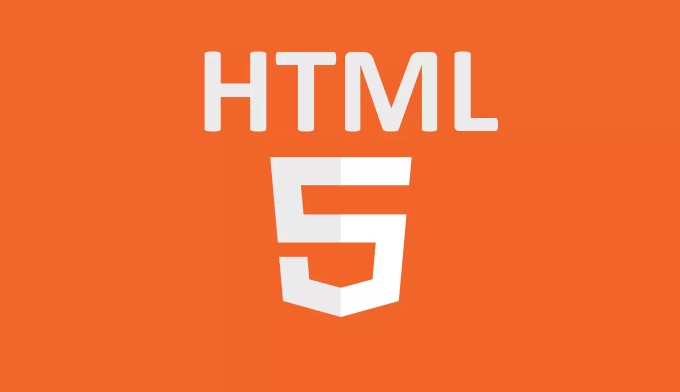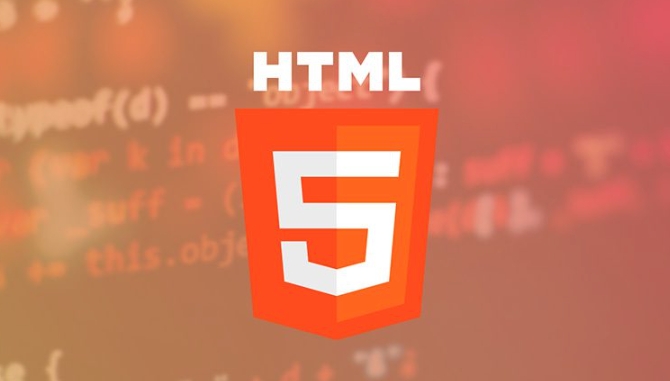Creating Reusable Content Structures with HTML5 Template Tag
Jul 06, 2025 am 01:39 AMThe HTML5 tag is used to create a reusable lazy content structure. The specific steps are: 1. Define the template; 2. Obtain and clone the template content through JavaScript; 3. Insert the clone content into the page. Its features include default invisible, support for any HTML, and require JS operations. It is suitable for scenarios such as component structure, dynamic loading, and preloading resources. The scripts and styles in the template need to be specially processed and cannot be nested in specific tags.

Creating a reusable content structure using the HTML5 <template></template> tag is actually a very practical trick. It is not a show-off, but helps you save some HTML content that you don't want to render immediately but may use in the future, and take it out and use it when needed.

What is the <template></template> tag?
<template></template> is a tag introduced in HTML5, specifically used to store "lazy" content. That is to say, the browser will not render the content inside the page when it is loaded, but it can be taken out and reused by JavaScript.

Its characteristics are several:
- The content inside is invisible by default
- You can put any HTML, including
<script></script>and<style></style> - Must be accessed through JS to clone
For example, if you have a comment box structure or a dynamic pop-up window, you can first write it in <template></template> and then insert it into the page when the user clicks the button.

How to create reusable content using <template></template> ?
The basic usage process is: define the template → obtain the template content → insert the page.
Let's give a simple example:
<template id="user-card">
<div class="card">
<h3>Username</h3>
<p>This is the user's profile information</p>
</div>
</template>
<script>
const template = document.getElementById('user-card');
const clone = document.importNode(template.content, true);
document.body.appendChild(clone);
</script>What the above code does is very clear:
- Find template elements
- clone its contents (the second parameter
truemeans deep cloning) - Add the cloned content to the page
This method is clearer and easier to maintain than direct spelling strings.
What are the practical application scenarios?
Several common uses include:
- Component structure : such as cards, list items, button groups, and parts that can be reused on multiple pages
- Dynamic loading of content : For example, click the "Add New Item" button and clone a copy from the template and insert it into the DOM.
- Preload resources : You can put some hidden styles or scripts in templates and execute them as needed
Let's give an example closer to reality: if you are doing a to-do application, each time you add a new task item, you can predefined the template for a task item, and then insert a new one in JS each time.
The benefits of doing this are:
- The page structure is clearer
- Reduce the confusion caused by string stitching
- It is easier to do data binding and update
Notes and FAQs
Although <template></template> is very convenient, there are some details that need to be paid attention to:
- It cannot be nested in certain tags, such as
<table> or <code><select></select>, otherwise it may go wrong - The script in the template will not be executed automatically unless you manually insert it into the DOM and process it
- If you write
<style></style>in the template, inserting it will affect the global style. Remember to addscopedor namespace
In addition, some developers mistakenly think that <template></template> is framework-specific, such as the template syntax of Vue or React, but in fact, this tag of native HTML has existed for a long time and is not bad in compatibility (mainstream browsers support it).
In general, <template></template> is a lightweight and practical tool suitable for those who want to improve the reusability of page structure but do not want to introduce complex frameworks. If used properly, it will save a lot of trouble.
The above is the detailed content of Creating Reusable Content Structures with HTML5 Template Tag. For more information, please follow other related articles on the PHP Chinese website!

Hot AI Tools

Undress AI Tool
Undress images for free

Undresser.AI Undress
AI-powered app for creating realistic nude photos

AI Clothes Remover
Online AI tool for removing clothes from photos.

Clothoff.io
AI clothes remover

Video Face Swap
Swap faces in any video effortlessly with our completely free AI face swap tool!

Hot Article

Hot Tools

Notepad++7.3.1
Easy-to-use and free code editor

SublimeText3 Chinese version
Chinese version, very easy to use

Zend Studio 13.0.1
Powerful PHP integrated development environment

Dreamweaver CS6
Visual web development tools

SublimeText3 Mac version
God-level code editing software (SublimeText3)

Hot Topics
 Audio and Video: HTML5 VS Youtube Embedding
Jun 19, 2025 am 12:51 AM
Audio and Video: HTML5 VS Youtube Embedding
Jun 19, 2025 am 12:51 AM
HTML5isbetterforcontrolandcustomization,whileYouTubeisbetterforeaseandperformance.1)HTML5allowsfortailoreduserexperiencesbutrequiresmanagingcodecsandcompatibility.2)YouTubeofferssimpleembeddingwithoptimizedperformancebutlimitscontroloverappearanceand
 Audio and Video: can i record it?
Jun 14, 2025 am 12:15 AM
Audio and Video: can i record it?
Jun 14, 2025 am 12:15 AM
Yes,youcanrecordaudioandvideo.Here'show:1)Foraudio,useasoundcheckscripttofindthequietestspotandtestlevels.2)Forvideo,useOpenCVtomonitorbrightnessandadjustlighting.3)Torecordbothsimultaneously,usethreadinginPythonforsynchronization,oroptforuser-friend
 Adding drag and drop functionality using the HTML5 Drag and Drop API.
Jul 05, 2025 am 02:43 AM
Adding drag and drop functionality using the HTML5 Drag and Drop API.
Jul 05, 2025 am 02:43 AM
The way to add drag and drop functionality to a web page is to use HTML5's DragandDrop API, which is natively supported without additional libraries. The specific steps are as follows: 1. Set the element draggable="true" to enable drag; 2. Listen to dragstart, dragover, drop and dragend events; 3. Set data in dragstart, block default behavior in dragover, and handle logic in drop. In addition, element movement can be achieved through appendChild and file upload can be achieved through e.dataTransfer.files. Note: preventDefault must be called
 Adding Audio and Video to HTML: Best Practices and Examples
Jun 13, 2025 am 12:01 AM
Adding Audio and Video to HTML: Best Practices and Examples
Jun 13, 2025 am 12:01 AM
Use and elements to add audio and video to HTML. 1) Use elements to embed audio, make sure to include controls attributes and alternate text. 2) Use elements to embed video, set width and height attributes, and provide multiple video sources to ensure compatibility. 3) Add subtitles to improve accessibility. 4) Optimize performance through adaptive bit rate streaming and delayed loading. 5) Avoid automatic playback unless muted, ensuring user control and a clear interface.
 What is the purpose of the input type='range'?
Jun 23, 2025 am 12:17 AM
What is the purpose of the input type='range'?
Jun 23, 2025 am 12:17 AM
inputtype="range" is used to create a slider control, allowing the user to select a value from a predefined range. 1. It is mainly suitable for scenes where values ??need to be selected intuitively, such as adjusting volume, brightness or scoring systems; 2. The basic structure includes min, max and step attributes, which set the minimum value, maximum value and step size respectively; 3. This value can be obtained and used in real time through JavaScript to improve the interactive experience; 4. It is recommended to display the current value and pay attention to accessibility and browser compatibility issues when using it.
 How can you animate an SVG with CSS?
Jun 30, 2025 am 02:06 AM
How can you animate an SVG with CSS?
Jun 30, 2025 am 02:06 AM
AnimatingSVGwithCSSispossibleusingkeyframesforbasicanimationsandtransitionsforinteractiveeffects.1.Use@keyframestodefineanimationstagesforpropertieslikescale,opacity,andcolor.2.ApplytheanimationtoSVGelementssuchas,,orviaCSSclasses.3.Forhoverorstate-b
 HTML audio and video: Examples
Jun 19, 2025 am 12:54 AM
HTML audio and video: Examples
Jun 19, 2025 am 12:54 AM
Audio and video elements in HTML can improve the dynamics and user experience of web pages. 1. Embed audio files using elements and realize automatic and loop playback of background music through autoplay and loop properties. 2. Use elements to embed video files, set width and height and controls properties, and provide multiple formats to ensure browser compatibility.
 What is WebRTC and what are its main use cases?
Jun 24, 2025 am 12:47 AM
What is WebRTC and what are its main use cases?
Jun 24, 2025 am 12:47 AM
WebRTC is a free, open source technology that supports real-time communication between browsers and devices. It realizes audio and video capture, encoding and point-to-point transmission through built-in API, without plug-ins. Its working principle includes: 1. The browser captures audio and video input; 2. The data is encoded and transmitted directly to another browser through a security protocol; 3. The signaling server assists in the initial connection but does not participate in media transmission; 4. The connection is established to achieve low-latency direct communication. The main application scenarios are: 1. Video conferencing (such as GoogleMeet, Jitsi); 2. Customer service voice/video chat; 3. Online games and collaborative applications; 4. IoT and real-time monitoring. Its advantages are cross-platform compatibility, no download required, default encryption and low latency, suitable for point-to-point communication






